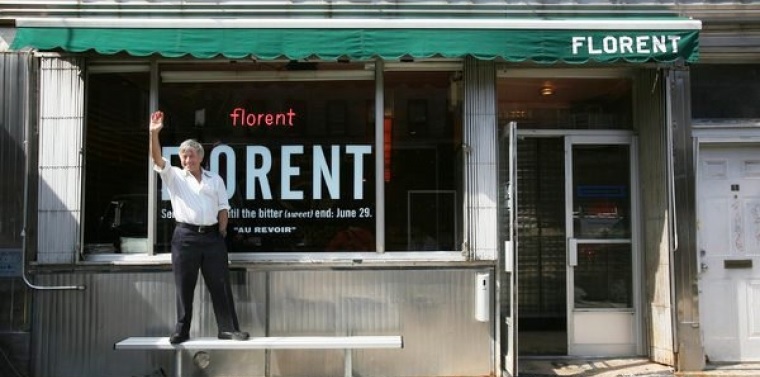Dear Chair Srinivasan:
WASHINGTON, D.C. – (RealEstateRama) — We are writing to express serious concerns about the Landmarks Preservation Commission (LPC)’s staff level approval of renovations at 69 Gansevoort Street, a contributing building in the Gansevoort Market Historic District, which is the site of the former Restaurant Florent. 69 Gansevoort Street is situated in the 27th State Senate district, which we represent.

We are heartened to hear that in response to a letter from the Greenwich Village Society for Historic Preservation (GVSHP), the LPC is working with the applicant to take corrective action to ensure that the renovations at 69 Gansevoort Street accurately conform to the changes sanctioned by the LPC. However, we are extremely disappointed that significant alterations to this location, especially the removal of the Moderne style aluminum façade, were considered and approved by LPC staff, rather than undergoing the standard Certificate of Appropriateness (CoA) process. As you are aware, the CoA procedure, unlike staff-level approval, mandates a public hearing and evaluation by the full LPC. We believe that the CoA process should have been pursued in this case.
Title 63, §2-17 of the Rules of the City of New York establishes the rules for restoration of a building and building façade features. The rules are in place to expedite restoration approvals by guiding staff decision making, but indicate that “proposed restoration work that does not confirm to these rules requires a [CoA] review by the full Commission in accordance with the Landmarks Law.” The rules dictate that restoration may be approved at staff level if the changes “would not cause the removal of significant historic fabric … that may have been added over time.” The elimination of 69 Gansevoort’s Moderne style aluminum façade, even with in-kind replacements, constitutes “the removal of significant historic fabric” and thus warranted review through the CoA procedure.
The significance of the façade is made clear in the Gansevoort Market Historic District’s designation report, which states that the “Moderne style building, largely intact to its 1949 alteration, contributes to the historically-mixed architectural character and varied uses of the Gansevoort Market Historic District. The building further contributes to the visual cohesion of the district through its brick and metal façade.”
In addition to its memorable façade, 69 Gansevoort Street is also most recently known as the home until 2008 of Restaurant Florent, a beacon of New York City nightlife and neighborhood political activism. The designation report quotes a 1995 New York Times article, which recounted how “a raucous night life began flourishing [in the Meatpacking District] in the 1970s, catering at first to gay men, then expanding its audience.” The report also notes “the first of the ‘new’ businesses (other than the clubs) in the district was the Florent restaurant.”
We request an explanation from you why the changes were approved for a contributing building such as 69 Gansevoort Street at the staff level without undergoing the CoA process and what you plan to do to remedy the situation. It is extremely regrettable that the public was not given the opportunity to comment on alterations, and now the façade of this iconic structure may be lost forever.
If you have any questions or concerns, please feel free to reach Jared Odessky in Senator Hoylman’s office at 212-633-8052.
Sincerely,
Brad Hoylman Deborah J. Glick Corey Johnson
State Senator State Assemblymember City Council Member
Hon. Meenakshi Srinivasan, Chair
New York City Landmarks Preservation Commission
1 Centre Street, 9th Floor
New York, NY 10007



